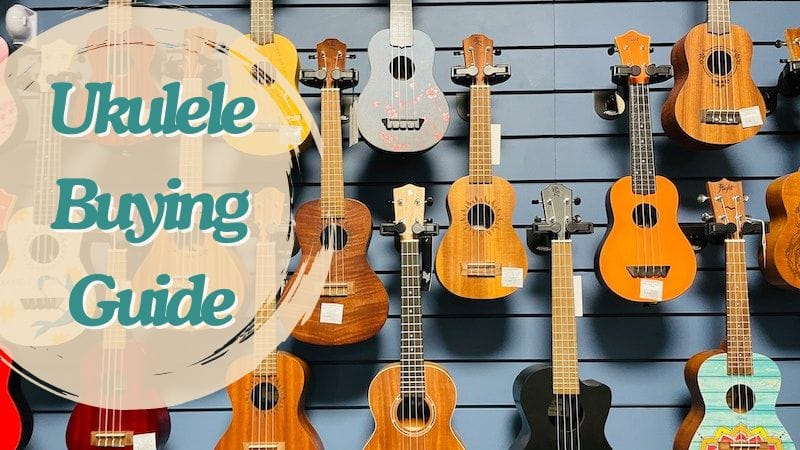Want to know the difference between the different ukulele sizes or looking to add to your ukulele collection? Read on to find out more.
Written by John Allnutt / Published August 12, 2024
Last updated: August 12, 2024
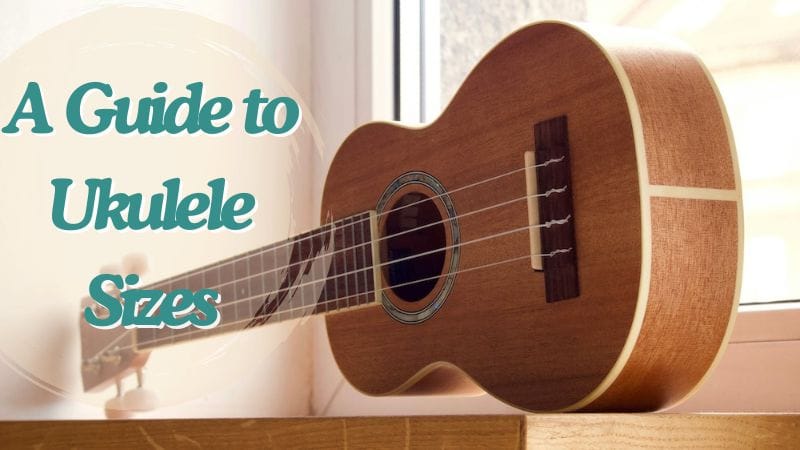
In this article I will outline the different ukulele sizes available today and their general use with their own pros and cons. If you are looking at acquiring a new ukulele and plan on playing it, not just collecting, I would advise you to consider what unique qualities a new ukulele could bring to your ukulele collection.
If possible, try out ukuleles in-person! I recommend that you visit a reputable ukulele store and talk with a sales associate to show you different ukuleles.
Below are the standard sizes of ukuleles available on the market.
Soprano Ukulele – The Original Ukulele Size
The soprano is the most portable of all ukulele sizes. Soprano ukuleles are known for being very easy to carry and travel around with and have a bright, cheerful, and delicate sound.
Depending on the ukulele, the soprano ukulele neck could feel a little too small for those with medium to large hands. Small or young children do very well with the soprano as a starting instrument since reaching the notes on the neck can be easier for them.
Alternatively, you may find that you like to play instrumental ukulele pieces such as chord melodies that require large stretches and may require hitting those high notes while playing chords. Being able to navigate the neck of the ukulele by stretching your fingers can be useful on the soprano or you may want to play quick chord changes on a fast song.
Originally, the soprano ukulele was tuned up a whole step with strings GCEA tuned to AC#F#B instead. If you would like to experiment with a higher tuning scheme the soprano could be a good instrument for you to experiment with.
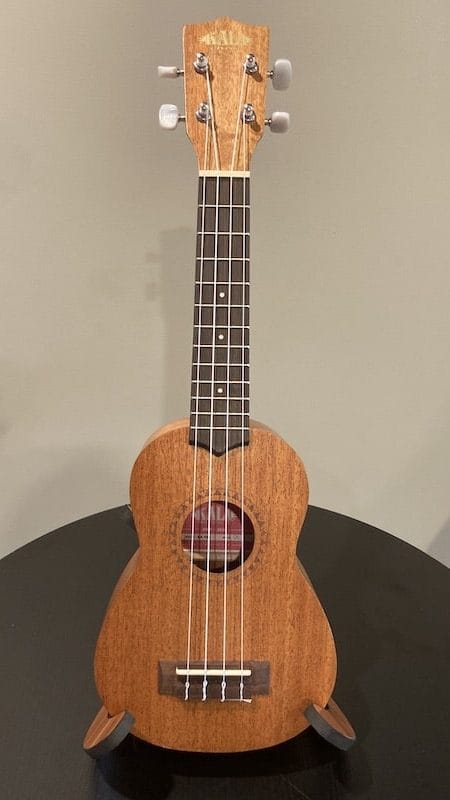
Soprano Pros
Soprano Cons
Concert Ukulele – The Most Popular of All Ukulele Sizes
This seems to be the ukulele size that most people prefer generally with a bit larger fret area for the left hand to maneuver. This instrument has the added bonus of the body being slightly larger that can help produce more sound.
Some concert ukuleles also may have a longer neck than their soprano counterparts allowing more notes to be played higher up the neck.
You can view our concert ukulele buying guide here.
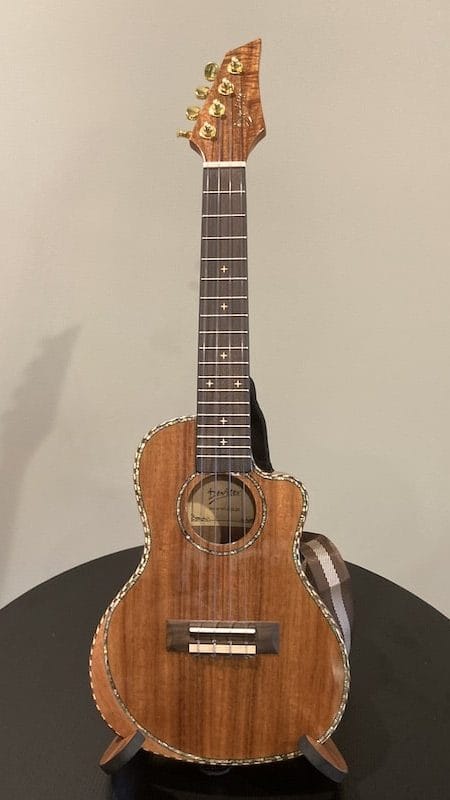
Concert Pros
Concert Cons
Did you know that soprano, concert, and tenor ukuleles all have the same GCEA tuning?
Tenor Ukulele – To Sum Up in One Word, Luxurious!
Tenor ukuleles are just larger than soprano and concert ukuleles. Interestingly – as mentioned above – soprano, concert, and tenor ukuleles all have the same tuning scheme but the tenor is the largest, loudest, and roomiest of the three.
I prefer tenor ukuleles as I have long and thin fingers. When making ukulele chords that require three or four different strings, having extra room to make these chords truly is a luxury! The tenor ukulele also has the potential to be louder than smaller sizes because of the body of the ukulele being larger as well as increased string tension from a longer neck.
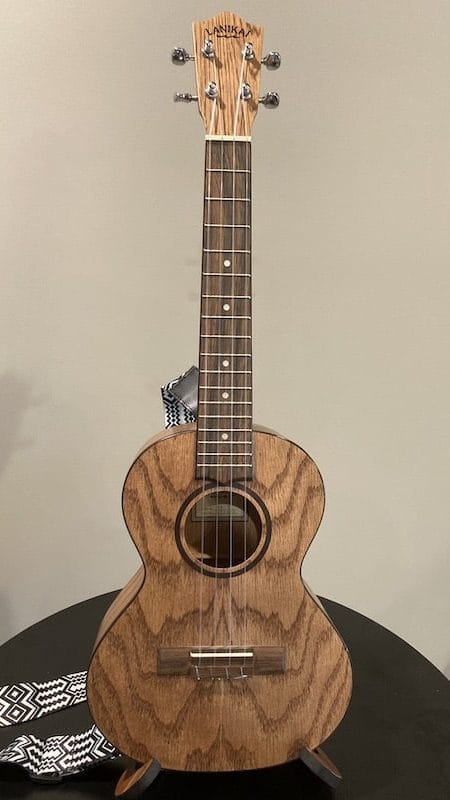
Tenor Pros
Tenor Cons
Baritone Ukulele – Bigger and Bolder
The baritone ukulele looks very similar to a tenor ukulele but is slightly larger and has a different tuning scheme – DGBE. If you are familiar with a guitar the baritone has the same tuning as a guitar but without the guitar’s two lowest strings.
If you like a lower and mellower sound the baritone has this in spades. A baritone ukulele is always welcome in a ukulele jam because it really helps complement the sound of GCEA ukuleles. Most baritone strings have a mixture of metal and standard ukulele string material.
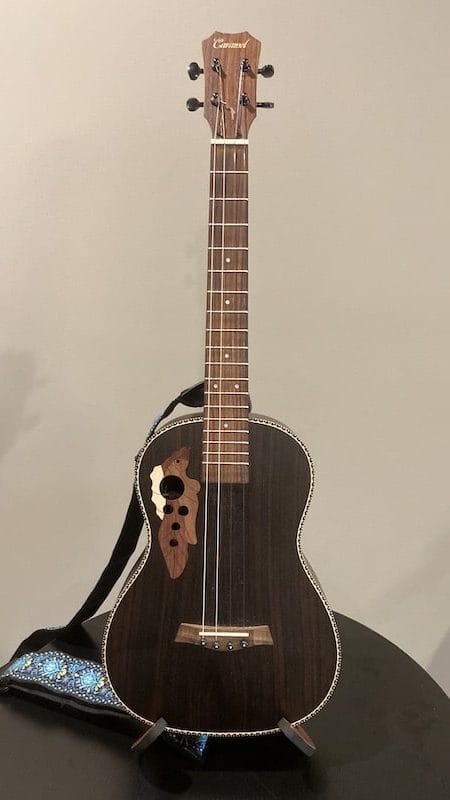
Baritone Pros
Baritone Cons
Bass Ukulele – All About That Bass
In a future article I will go in-depth on the short-scale bass or ukulele bass.
Bass is different from ukulele because usually only one note is played at a time instead of strumming or playing simultaneous chords.
It is very important to have at least one bass player in a ukulele group to help support the musical foundation.
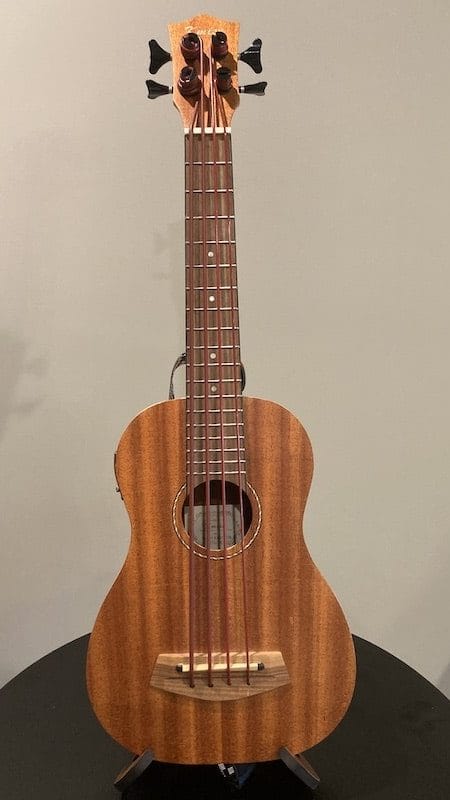
Final Points
We have more options than ever when considering a ukulele purchase. You may find that your tastes change with the instruments that you play and prefer the sound of.
There are also now fully electric ukuleles with magnetic pickups and nickel strings, as well as banjoleles, acoustic electric ukuleles, and harp ukuleles with drone strings.
Another consideration when buying a ukulele is choosing what it is made of. Ukuleles can be made of laminate wood, carbon fiber, plastic, or solid wood. This topic will require an in-depth look and will be explored in a future article.
If you would like to hear the differences between these instruments or see and experience different ukulele sizes check out the song “Ukuleles Are The Best” on my YouTube channel.

John Allnutt
Writer & Ukulele TeacherJohn has been teaching music since 2008 and resides in Richmond, Kentucky with his wife Laura and dog Sam. In his spare time he enjoys growing and cooking food, roasting coffee, playing board games, and spreading joy through playing and teaching music.

